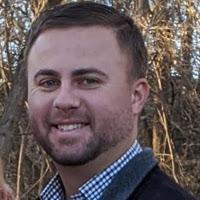Pruning blanket flowers, also known as Gaillardia, is a crucial part of maintaining the health and appearance of the plant. One common maintenance pruning technique is deadheading, which involves cutting back spent blooms to encourage the plant to produce more flowers. This can be done by snipping off the faded blooms with pruning shears or pinching them off with your fingers.

Another pruning technique for blanket flowers is winter/spring cleanup. This involves cutting the plant back to the ground in early spring before new growth emerges. This can be done with pruning shears or scissors. This pruning can tidy up the plant and encourage fresh growth. Once blooming subsides late in summer, you can trim the plant back by one-third to keep the growth compact and bushy.
When to Prune Blanket Flower
The best time of the year to prune blanket flowers is in the early spring before new growth emerges. Pruning at this time will remove old growth damaged during the winter to make space for new growth. Deadheading can be done throughout the growing season as needed. This will prevent the plant from making seed, and encourage further blooming.
Blanket flower goes dormant during the winter, but may stay evergreen in climates with warm winters. In areas prone to frost, you can cut back all growth in late fall to prepare for dormancy. At the higher end of its growing range, you can leave the foliage on the plant during the winter and cut back any winter-damaged foliage in the spring.

Why Prune Blanket Flower
In addition to pruning in early spring, you may also want to deadhead or trim blanket flowers throughout the growing season. Deadheading can be done as needed to encourage the plant to produce more flowers instead of producing seed. You can also cut the whole plant back by about one-third in late summer to refresh growth.
How to Prune Blanket Flower
Step 1 - Deadheading
Begin by cutting off the spent blooms using a pair of sharp pruning shears or scissors. Cut the stem just below the faded flower, cutting back to a set of leaves. Repeat this process throughout the growing season as needed to encourage the plant to produce more flowers.
Step 2 - Trimming
Use a pair of sharp pruning shears or scissors to shape the plant and keep it from becoming too tall or leggy. Trim the plant back by 1/3 to 1/2 of its current height in late summer after blooming. Be sure to make the cuts just above a leaf node to encourage new growth.
Step 3 - Spring clean-up
In early spring, before new growth emerges, remove all spent and winter-damaged growth. Use a pair of sharp pruning shears or scissors. This pruning can help to tidy up any remaining dead foliage and encourage new growth.
In summary, deadheading and trimming will help to maintain a healthy and blooming blanket flower. It's important to prune at the right time of the year and to use sharp tools to avoid damaging the plant. Proper pruning techniques allow you to enjoy a vibrant and beautiful blanket flower all season long.
Blanket Flower Pruning Tips
- Deadhead spent blooms regularly to encourage continued flowering.
- Cut back the entire plant by about one-third to one-half its height after the first flush of blooms to encourage bushier growth.
- Remove any yellow or damaged leaves to promote healthy growth.
- Cut back all growth in late fall or early spring to make room for new growth.
- Be sure to disinfect your pruning tools before and after use to prevent the spread of disease.
 |
Author Chris Link - Published 2-6-2023 |
